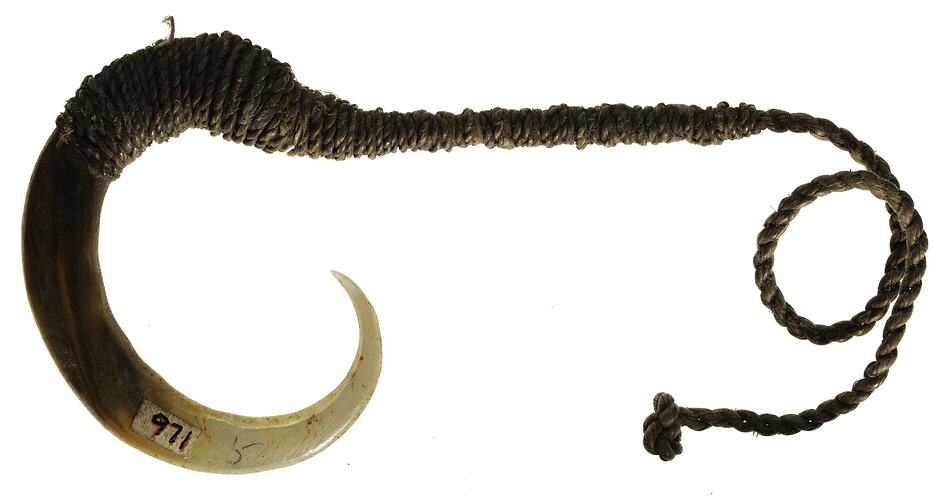Summary
This hook is documented as having been collected from around Rockingham Bay, the port established in the 1840s in response to an increase in maritime traffic along Australia's eastern seaboard. It also served as the launching point for overland expeditions and to service settlements established inland on the Tablelands. By 1862 Cardwell was established and within a decade most Aboriginal people had been moved off their land and those who survived sought refuge in remote locations or on the fringe of the new towns and settlements. Some enterprising individuals took the opportunity to make and sell artefacts to the settlers and other newcomers, and the earliest historical accounts of this trade in artefacts are from the crews and others onboard sailing ships. In 1848, the artist on the Rattlesnake, Oswald Walters Brierly wrote in his journal that good relations had been established with people on Cape York and that they 'were all eager for tobacco and brought spears, tortoiseshell fish hooks, throwing sticks, to offer in exchange for it'.
Local Name
Karkal
Physical Description
A fish hook made of shell, possibly Haliotis sp., shaped in a curve and sharpened to a point at one end. It is attached to string spun from vegetable fibre.
Significance
This is a rare and very early example of a shell fish hook from the contact period in Australia. It was collected from Rockingham Bay in north Queensland around the mid-1850s and perhaps even as early as the 1840s.
More Information
-
Object/Medium
Hook
-
Maker
-
Locality
-
Date Produced
-
Collector
-
Object Measurements
115 mm (Length), 65 mm (Width), 10 mm (Height)
-
Classification
-
Date Made
-
Maker
-
Clan/Language Group
-
Place Made
-
Indigenous Region
-
Keywords
-
Type of item
-
Discipline
-
Category
-
Collecting Areas
Australian Indigenous - Northern Australia and Queensland and Torres Strait Islands



